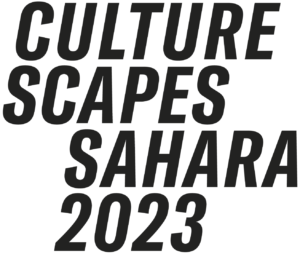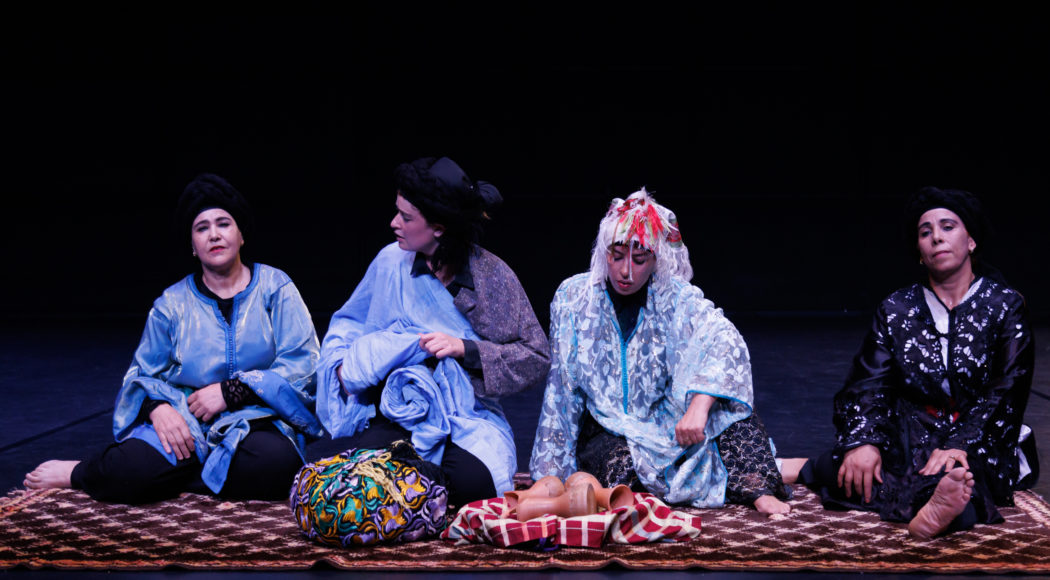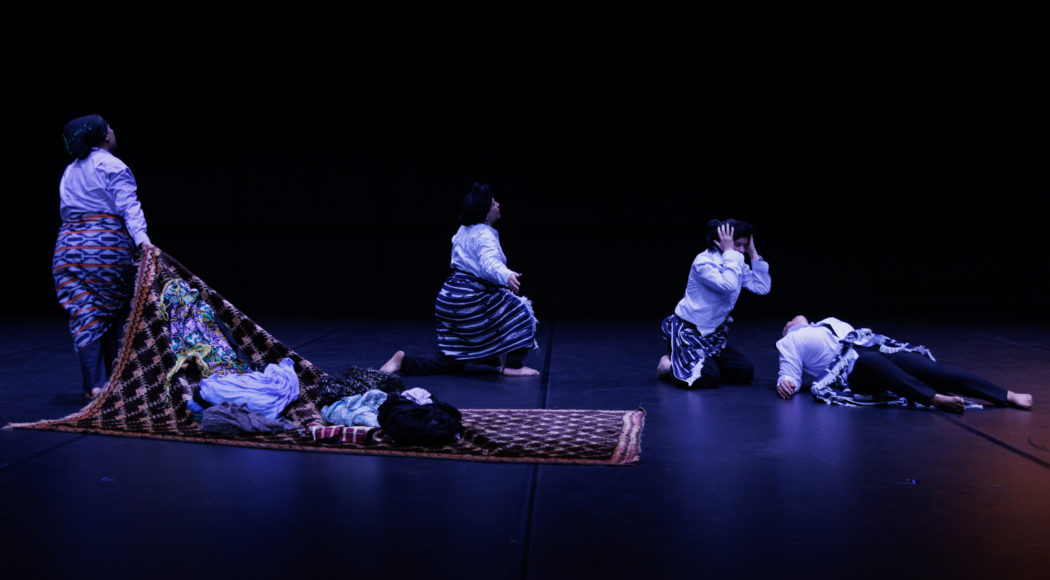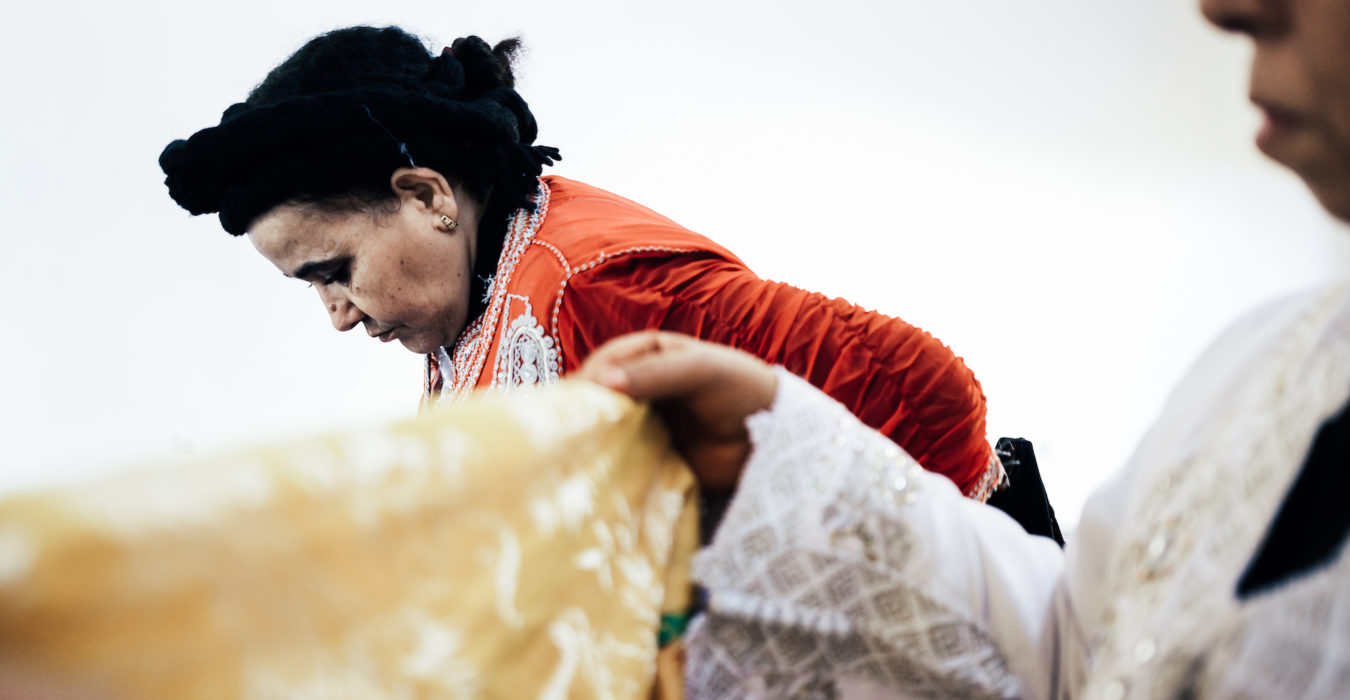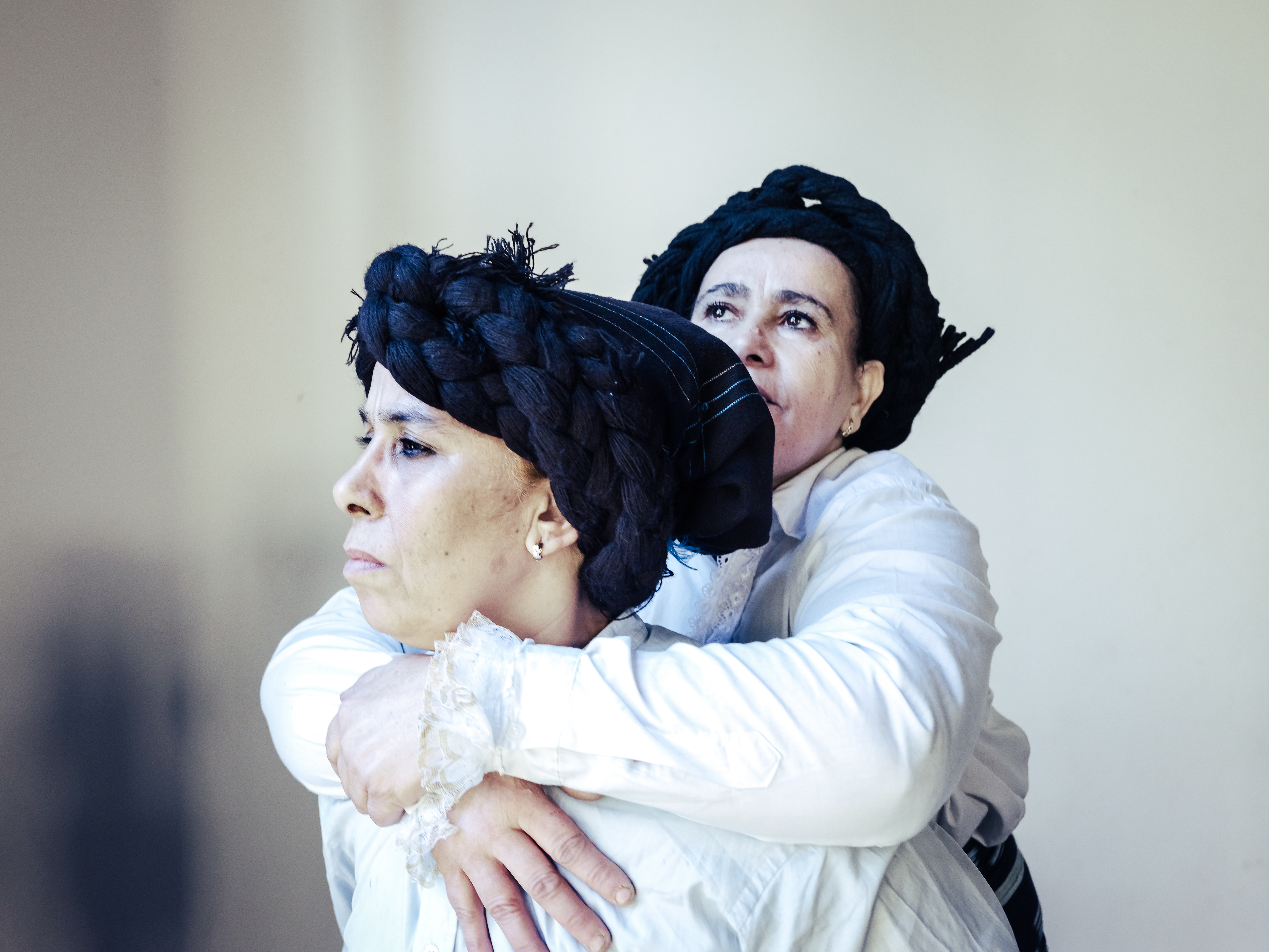Éléphant
Bouchra Ouizguen
“Like my previous works, this piece was created entirely in Morocco, but this time in the mountains. Walking, singing, storytelling, and being in nature have shaped us.”
Bouchra Ouizguen is considered a pioneer of contemporary Moroccan dance. In her new work, “Éléphant,” she continues her previous artistic explorations of traditional singing techniques, dances, rituals and the popular repertoire of the Marrakech region, asking what remains, what is passed on – at a time when traditions are in danger of disappearing. Accompanied by her long-time accomplices Milouda El Maataoui and Halima Sahmoud as well as the dancer Joséphine Tilloy, Bouchra Ouizguen has created a choreography that moves between (reinterpreted) tradition and her affinity for contemporary dance, and in which body and sound intertwine.
Duration: ca. 1 h
No language
On 24.11. Audience discussion afterwards, moderated by Samira Nasser (Head of Pre-Classes at the Dresden Philharmonic)
In “Éléphant,” Bouchra Ouizguen delves into the traditional musical repertoire of the laâbates (the female players). Frowned upon by the patriarchal gaze, the all-female singing and dancing groups enliven convivial festivals and family gatherings in both Morocco’s cities and villages. Their song celebrates events as cycles of nature and recalls the joys and dramas of individuals and communities, births and deaths.
The musical culture of the so-called Houariyat women is closely linked to the economic and social role played by Moroccan women. For example, women perform a large share of community work and are particularly well represented in the textile industry. During breaks in field work, women traditionally sit in a circle, singing and accompanying themselves with hand and percussion instruments. Their musical style is influenced by the sub-Saharan and ancient music of North Africa – its polyrhythms, its use of call and response patterns, its five-tone music, and its typical cyclical structure/multi-part composition. Close examination reveals a compositional structure based on a constantly varying arrangement of a limited set of rhythmic patterns, reminiscent of African patterns of textile weaving. This musical form is reinforced by dynamics and tempo variation. In addition, only percussion instruments such as tara, bendir, tarija, derbouka, dâwdâw and naqqus are used. Since music is considered a spiritual essence in Morocco, every concert, whether in a traditional or modern context, begins with an appeal to the divine spirit, asking the marabout (Islamic saint) for help and praising the prophet.
Bouchra Ouizguen is a dancer and choreographer. Born in 1980 in Ouarzazate, Morocco, she now lives and works in Marrakech. She is, like Taoufiq Izzediou, co-founder of Morocco’s first contemporary dance company ANANIA, colloborated with Mathilde Monnier, Bernardo Montet, Boris Charmatz, Julie Nioche et Abdellah Taïa and founded the Compagnie O in 2010.
In her works she creates a personal, unique and inspired form of choreographic expression, far from Western contemporary dance. For more than a decade, she has collaborated with female musicians from southern Morocco, who embody part of the country’s cultural heritage. For Bouchra Ouizguen, they carry a form of joyful freedom that is at odds with society’s gender, cultural, and racial biases. By inviting them into the contemporary dance scene, Ouizguen brings together past and present, tradition and modernity.
Artistic Direction: Bouchra Ouizguen
Dancers and singers: Milouda El Maataoui, Bouchra Ouizguen, Halima Sahmoud, Joséphine Tilloy,
Lighting design: Sylvie Mélis
Sound engineer: Chloé Barbe
Administration and production: Mylène Gaillon
